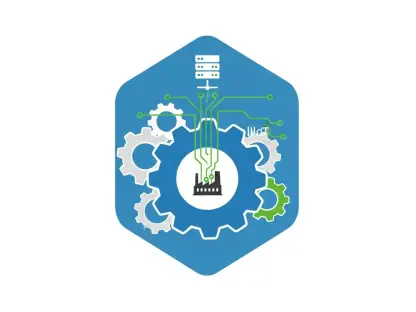The semiconductor industry, a cornerstone of modern technology powering everything from artificial intelligence and defense systems to smartphones and clean energy solutions, is under an unprecedented siege from cybercriminals. A recent threat intelligence report titled Silicon Under Siege has exposed a chilling reality: cyberattacks targeting this vital sector have surged sixfold since 2022, driven by nation-state actors, ransomware groups, and hacktivists. These attacks are not mere nuisances but strategic assaults that threaten global supply chains, national security, and economic stability. With losses from ransomware alone exceeding $1.05 billion since 2018, the stakes have never been higher. As semiconductors become both a critical asset and a prime target, the industry faces a silent yet devastating cyber war that could reshape the balance of technological power worldwide. This escalating threat landscape demands urgent attention and robust countermeasures to safeguard the backbone of global innovation.
1. Unveiling the Escalating Cyber Threat Landscape
The semiconductor sector’s critical role in global infrastructure has made it a magnet for sophisticated cyber threats. According to the latest intelligence, attackers ranging from state-sponsored groups to independent ransomware operators are launching coordinated campaigns against chip manufacturers. These entities aim to exploit vulnerabilities for espionage, financial gain, or geopolitical leverage. The strategic importance of semiconductors—integral to AI, healthcare, and defense—amplifies the impact of each breach. Beyond mere data theft, these attacks can disrupt entire supply chains or compromise national security by embedding malicious elements into hardware. This growing menace underscores the urgent need for heightened vigilance and advanced defenses to protect an industry that underpins modern life.
Moreover, the complexity of these threats is evolving with alarming speed. A proof-of-concept study demonstrated how artificial intelligence can be weaponized to design hardware Trojans during the pre-design phase of chip production. These AI-generated implants can remain undetected for years, only activating to leak sensitive data or sabotage operations at critical moments. Such innovations in attack methods reveal a chilling potential for long-term, invisible damage. The semiconductor industry must grapple with not only the volume of attacks but also their increasing sophistication, as adversaries leverage cutting-edge technology to bypass traditional security measures. This dual challenge of scale and innovation sets a daunting stage for cybersecurity efforts in the sector.
2. Alarming Statistics and Vulnerabilities Exposed
Delving into specific findings, the volume of cyberattacks on the semiconductor industry has skyrocketed, with a sixfold increase since 2022. This surge is fueled by espionage efforts, supply chain compromises, and state-sponsored campaigns aiming to undermine competitors or gain strategic advantages. Financially, the toll is staggering—ransomware-related losses have reached $1.05 billion since 2018, encompassing ransom payments, operational downtime, and recovery expenses. Additionally, over 60% of breaches in industrial control systems originate in IT environments through tactics like phishing, VPN exploits, and compromised credentials before pivoting to operational technology. These statistics paint a grim picture of an industry struggling to keep pace with relentless and well-funded adversaries.
Infrastructure exposure further compounds the problem, particularly in key regions. In the United States, approximately two million publicly reachable industrial control system assets tied to semiconductor operations are potentially unsecured due to weak or default controls. Similarly, across the Middle East, exposed assets linked to manufacturing and critical industries like oil and gas face risks from outdated protocols and misconfigurations. These vulnerabilities create open doors for attackers to exploit, potentially leading to catastrophic disruptions. High-profile espionage incidents, such as the recent infiltration by a China-backed group into Taiwanese firms via compromised software updates, highlight how these weaknesses are actively targeted to steal proprietary designs and critical data.
3. Geopolitical Stakes in the Silicon Cold War
Semiconductors have emerged as a flashpoint in global power struggles, often dubbed the “Silicon Cold War.” This contest sees nations investing heavily to secure dominance in chip technology, with China committing over $150 billion to achieve self-sufficiency, the United States allocating $52 billion through the CHIPS Act to reshore manufacturing, and India targeting a $100 billion market by 2030 with a $10 billion investment. Cyber espionage, supply chain intrusions, and state-backed sabotage are now central tactics in this race, as nations seek to control the technology that underpins economic and military strength. The geopolitical ramifications of a single breach can ripple across borders, altering the balance of power.
State-sponsored threat groups are intensifying the risks by embedding themselves in software pipelines, design tools, and factory operations. Actors like APT41 and Volt Typhoon are shifting from simple data theft to long-term disruption strategies that could cripple production during geopolitical crises. These advanced persistent threats exploit the interconnected nature of the semiconductor supply chain, where a single point of failure can have cascading effects globally. The 2023 ransomware attack on MKS Instruments, which led to $250 million in losses for Applied Materials in just one quarter, exemplifies how vendor compromises can destabilize entire ecosystems. This geopolitical-cyber nexus demands a coordinated international response to mitigate risks.
4. Historical and Recent Cyber Incidents as Warning Signs
The semiconductor industry’s vulnerability to cyber threats is not a recent phenomenon but a persistent challenge underscored by historical attacks. The 2010 Stuxnet worm, which sabotaged Iran’s nuclear facility, and the 2018 WannaCry infection that halted iPhone chip production at TSMC, serve as stark reminders of the destructive potential of such threats. These landmark events demonstrated how cyberattacks can target critical infrastructure with precision, causing widespread operational and financial damage. They also highlighted the sector’s interconnectedness, where a breach in one area can disrupt global technology supply chains, emphasizing the need for robust defenses against evolving digital threats.
Recent incidents further illustrate the ongoing and diverse nature of these risks. The November 2023 breach at Aliquippa Water Authority exposed default credentials on industrial systems, while state-affiliated actors exploited VPN vulnerabilities in 2025 to access operational networks. Additionally, infostealer malware targeted defense contractors earlier this year, harvesting credentials for potential misuse. The Medusa ransomware campaign, active since 2021, has focused on legacy systems in manufacturing, combining encryption with intellectual property extortion. The August 2024 breach at Microchip Technology, costing $21 million and disrupting facilities, reinforces that IT compromises can directly impact operational functions, signaling an urgent need for comprehensive security overhauls.
5. Strategic Steps to Fortify Industry Defenses
Addressing the cyber threats facing the semiconductor sector requires actionable and immediate strategies to bolster security. One critical step is isolating IT and operational technology networks to prevent attackers from moving laterally between corporate systems and manufacturing environments. Adopting secure-by-design principles is equally vital, incorporating measures like RTL integrity checks, formal logic verification, and traceable software bills of materials for third-party components. These practices can help ensure that potential vulnerabilities are identified and mitigated at the design stage, reducing the risk of embedded threats like hardware Trojans that could lie dormant for years before activation.
Furthermore, continuous monitoring of the attack surface is essential to detect exposed assets, leaked credentials, and unpatched software vulnerabilities before they are exploited. Strengthening vendor risk management by enforcing stringent security requirements on suppliers and third-party providers can also prevent cascading disruptions from a single breach. Finally, promoting global threat intelligence sharing across borders is crucial to identify and neutralize state-sponsored campaigns before they escalate. Platforms that provide real-time visibility into exposed IT and operational assets, alongside mapping vulnerable vendor ecosystems, can empower chipmakers to proactively address risks and safeguard the integrity of the global technology landscape.
6. Reflecting on Past Challenges and Future Safeguards
Looking back, the semiconductor industry grappled with monumental cyber challenges that exposed its vulnerabilities, from the devastating Stuxnet attack to recent ransomware campaigns that inflicted billions in losses. Each incident, whether a state-backed espionage effort or a vendor compromise, revealed how deeply interconnected and fragile the global supply chain had become. These breaches often went undetected until the damage was irreversible, etched into the very silicon that powers critical systems. The financial toll, operational disruptions, and geopolitical consequences underscored a harsh reality: the sector was unprepared for the scale and sophistication of modern cyber warfare.
Moving forward, the focus must shift to proactive resilience and international collaboration. Industry leaders should prioritize integrating advanced security measures into every stage of chip design and production, ensuring that vulnerabilities are addressed before they become exploitable. Governments and corporations alike need to invest in cutting-edge threat detection tools and foster partnerships to share intelligence on emerging risks. By learning from past oversights and implementing rigorous safeguards, the semiconductor sector can build a fortified future, protecting not just individual companies but the global economy and security architecture that depend on this critical technology.









